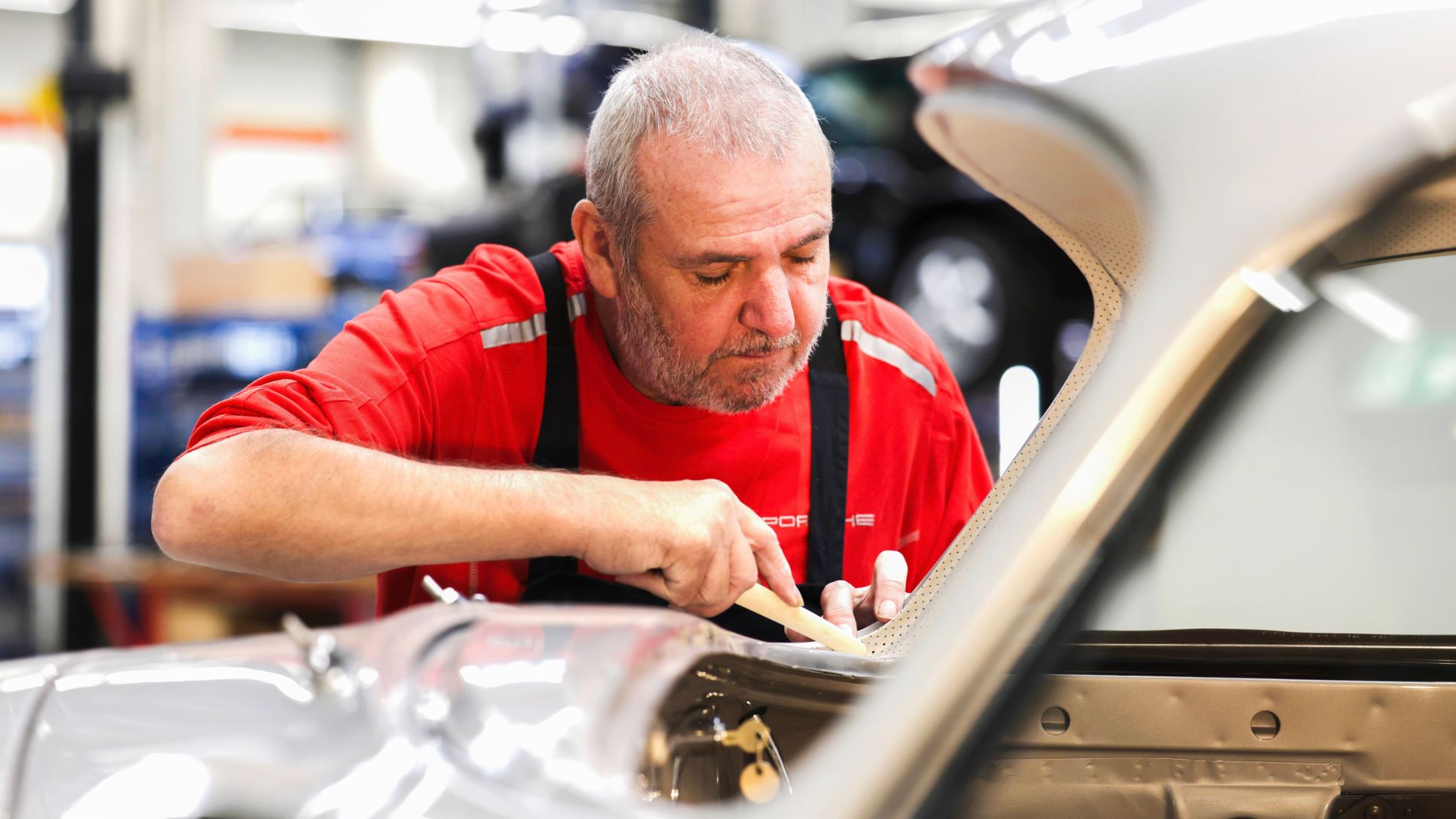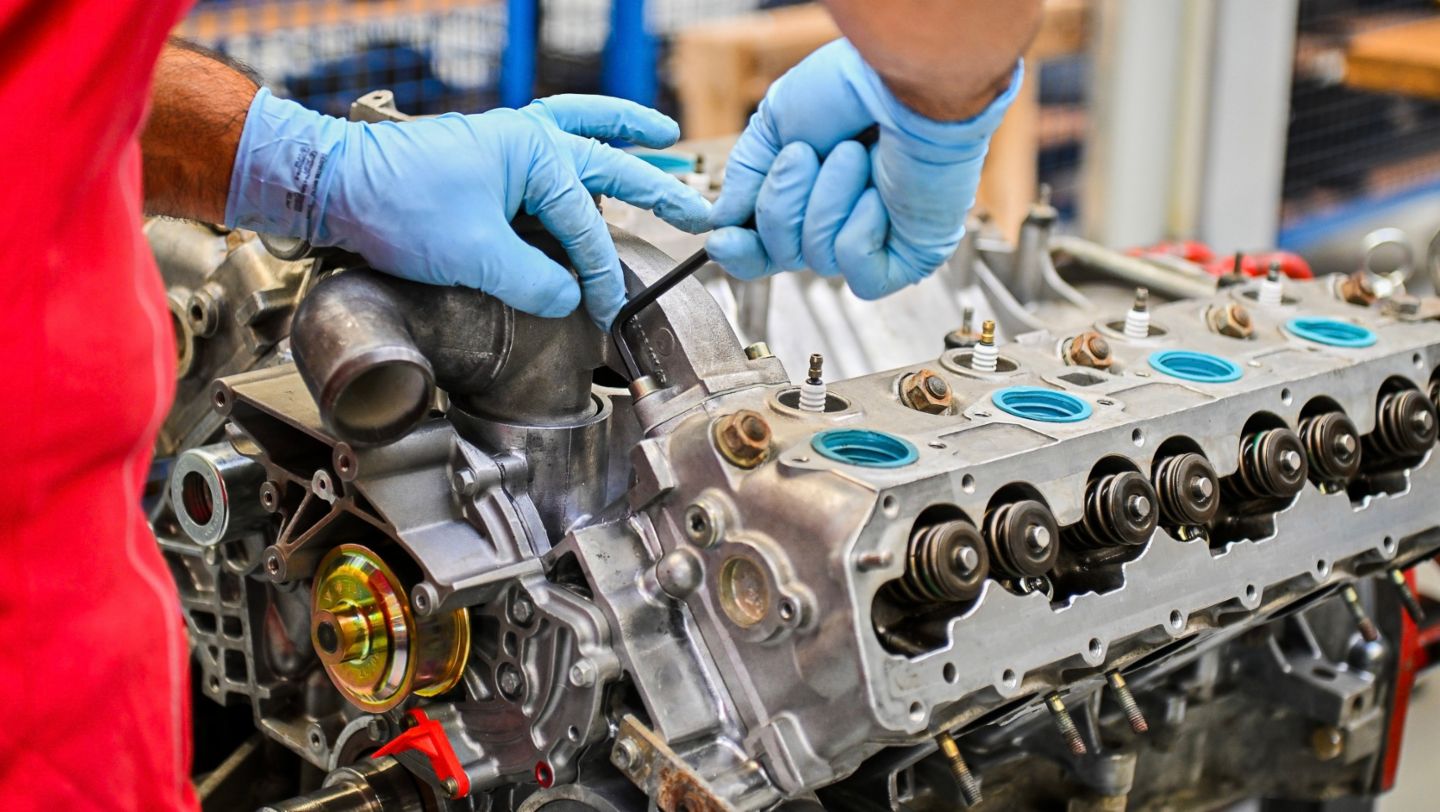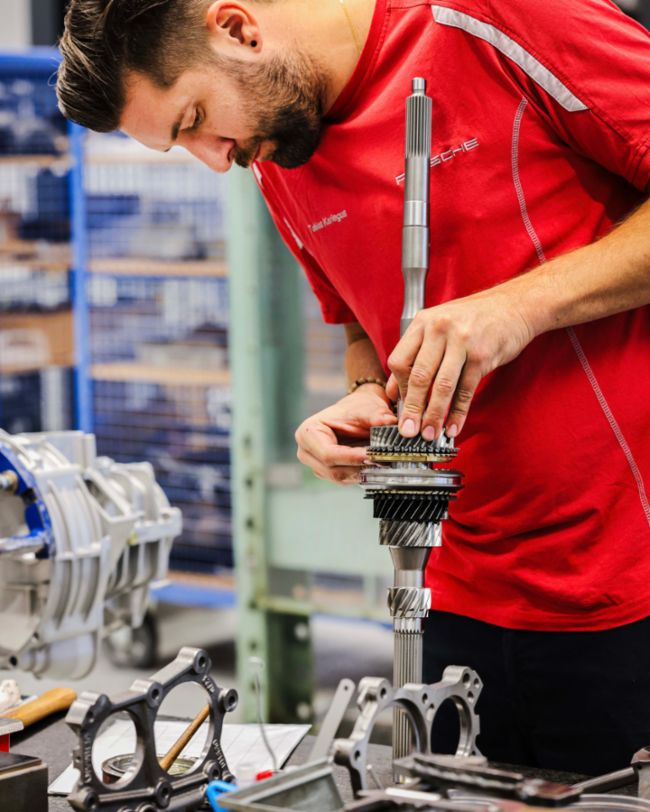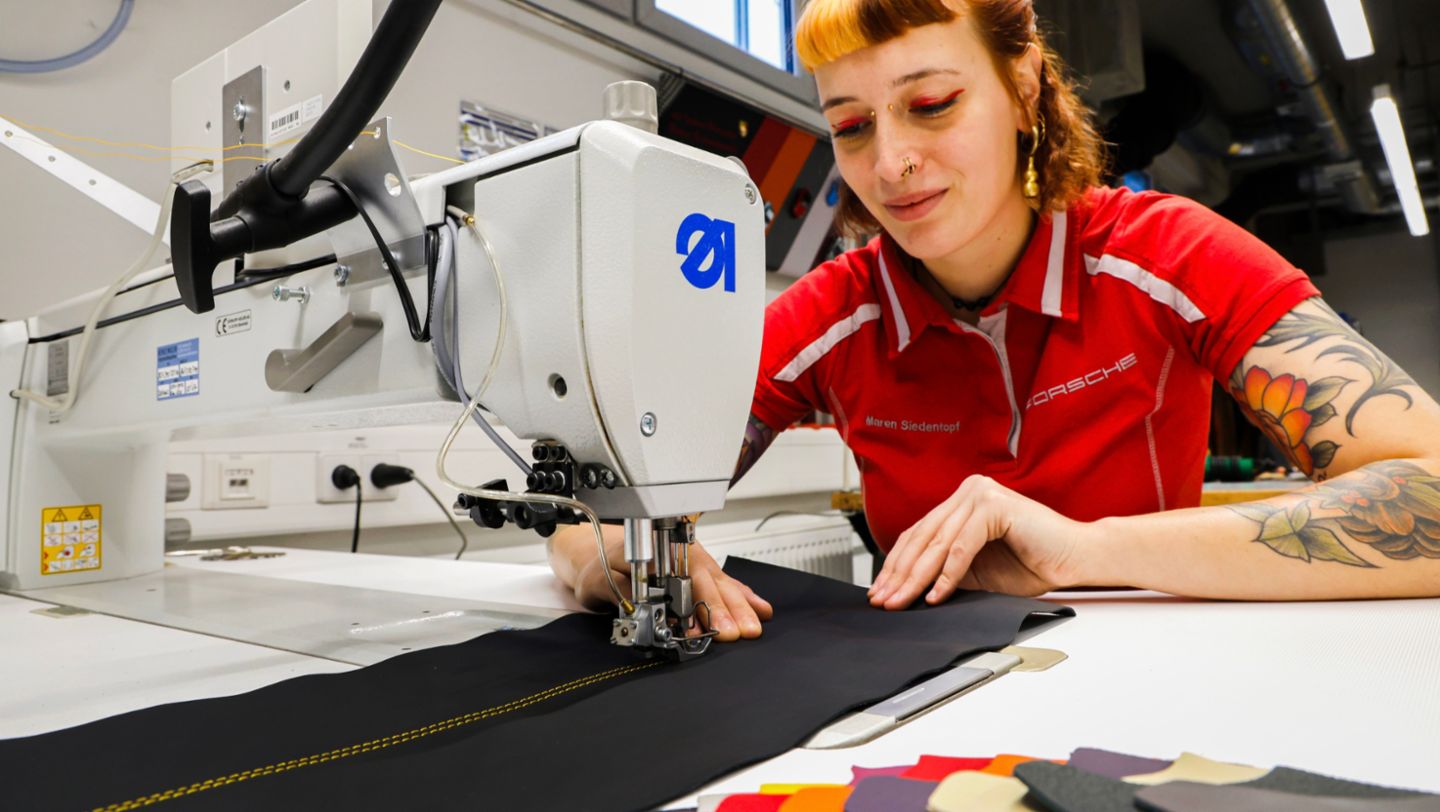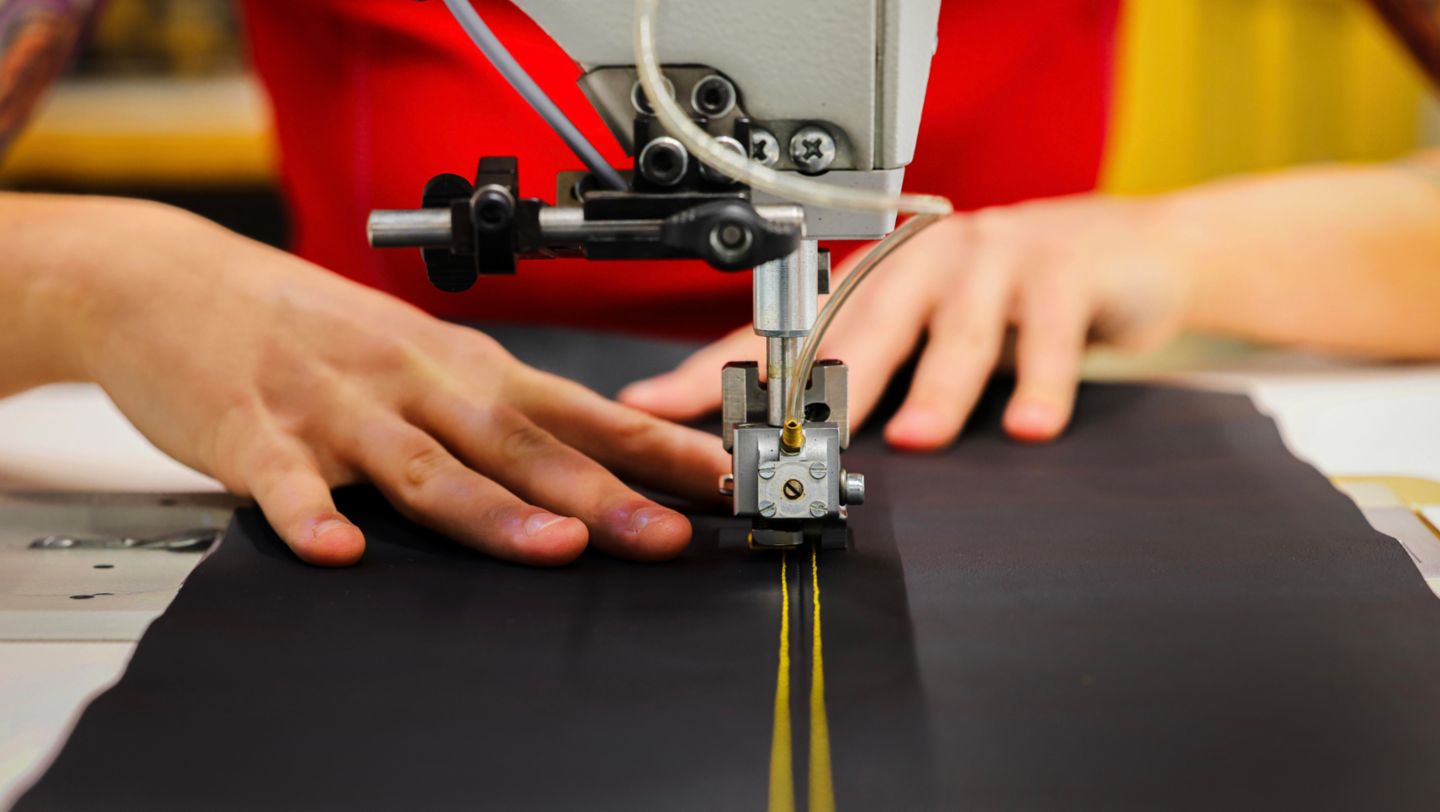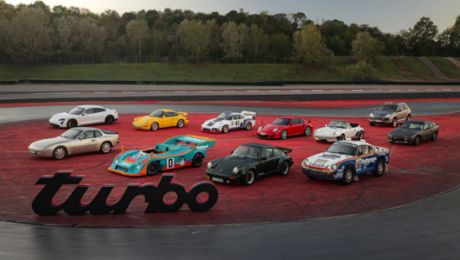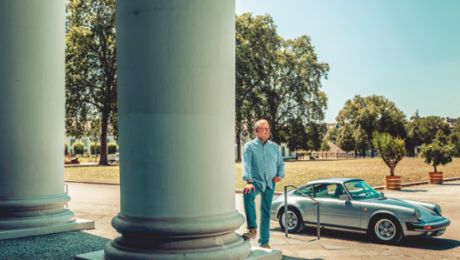With their skill, they build Porsche classics into dream cars, either as part of true-to-original factory restorations or as an individual Sonderwunsch project. However, when these professionals retire, this could leave a gap. The exchange and transfer of their knowledge are very valuable for Porsche Classic and are a decisive factor in its success.
How knowledge remains in the company
“There are big shoes to fill,” Tobias Kariegus admits. The 33-year-old recently replaced his father as a gearbox expert in the Porsche Classic factory restoration team. “Of course, this succession scheme is ideal for us. It means that knowledge remains not only in the family, but also in the company,” says Uwe Makrutzki, Classic Factory Restoration Manager at Porsche.
After his training as a vehicle mechatronics technician, Tobias Kariegus worked in Porsche Production for 10 years before switching to Porsche Classic Factory Restoration. “My previous job was a dream job at the time. But restoring all sorts of different old manual gearboxes from model 356 to 959 is even more exciting – I find it really fulfilling.” Half a year of training on the job was all he got before his father, Klaus, went into early retirement at the age of 62 and handed over the baton to Tobias. “It sounds like a short induction phase, but that half a year is all relative. Especially when you bear in mind that you’re learning from the best of the best” emphasises Uwe Makrutzki.
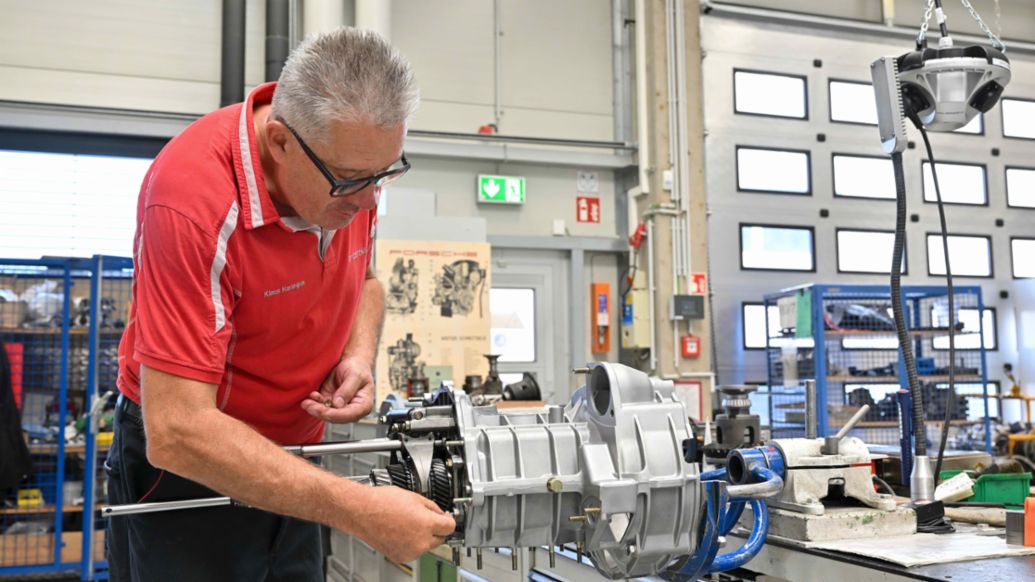
Klaus Kariegus has gathered a total of 40 years of experience: Even before Porsche Classic Factory Restoration was established, the trained mechanic was working on gearboxes in its precursor, the factory repair department. The qualification programme for his successor was as demanding as ever – there was no room for slacking, even between family. In addition to various restorations, the father-and-son team has produced a proud small series of 50 gearboxes for the 911 (type 993) in these six months – an invaluable pool of spare parts for the worldwide customers whom Porsche Classic supplies with spare parts.
Finding the cause is often detective work
In the course of a Porsche factory restoration, the engine and gearbox are almost entirely dismantled, cleaned and inspected. Worn or defective parts are replaced or, if possible, also repaired and restored if requested by the customer. “Finding the cause of the fault, such as a gear jumping, is often real detective work. The years of experience often help, as you often remember where there have previously been problems with the same gearbox,” says Klaus.
Once refitted, the gearbox then has to prove its performance with an extensive test run. “That was always the most exciting moment, when the boss went out on a test drive,” says Klaus Kariegus with a smile. There are no test benches in the gearbox department that can be used to determine whether or not it will function correctly in advance. “But in the vast majority of cases, Uwe Makrutzki came back from the test run with a big grin and everything had worked properly” Kariegus Senior continued. In many cases, gearboxes are not installed on site, but sent to Porsche Classic Partners worldwide.
He leaves his son extensive personal notes with setting values and repair instructions for the more uncommon models such as the Porsche Jagdwagen. Of course, he is also passing on special tools such as his self-built adjustment housings: these housings are bolted to the block in place of the rear part of the gearbox. They are cut in such a way that they create a “window” for adjusting, for example, the shift forks.
Between the generations, the gearbox area has relocated within Porsche Classic Factory Restoration. This brings with it ergonomic improvements: Unlike his father, Tobias Kariegus no longer has to process the 50- to 100-kg gearboxes on assembly stands that are mounted on the workbench. Instead, he uses a holding device tailored to his stature. A modern crane system on the hall ceiling also helps to transport the gearbox components.
Transfer of knowledge on the vehicle interior
At first glance, this duo, who work on the interior at Porsche Classic Factory Restoration, could not be more different: Peter Schwämmle, 57, who is trained as an upholsterer, modestly tells us about his daily business. Every now and then, his smile reveals his passion for the exquisite materials and the team’s top-level craftsmanship. His colleague Maren Siedentopf is 35 years younger. However, their love of craftsmanship brings them together: “Creating something unique fills me with deep satisfaction,” says Peter Schwämmle. “In addition, it’s nice to see the appreciation of our customers. I have known some of them for years and sometimes they stop if there’s a new project.”
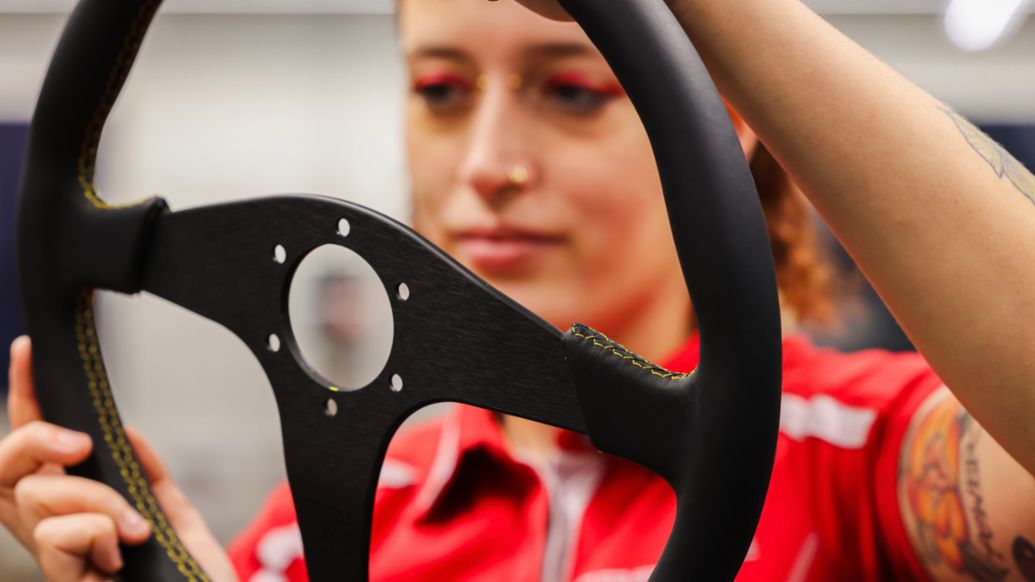
It’s great to get immediate feedback on your work in this way. Maren Siedentopf, who also initially worked in production after her training and switched to Porsche Classic Factory Restoration two years ago, finds this direct feedback extremely motivating. In addition to the variety of tasks, she is fascinated by the synergy of different materials and processing techniques: “Every stitch, every material tells its own story. By working on a project for months at a time and fulfilling even the most extraordinary wishes of our customers, we become part of this unique story.”
More than 1,000 cutting patterns in the archive cabinet
The interior is one of the final stages of a full restoration or a Sonderwunsch project at Porsche Classic Factory Restoration. Customers have a wide range of options available, from a true-to-original restoration to individual special equipment. Peter Schwämmle and Maren Siedentopf manufacture exclusive components for the interior. Seat covers, instrument panels, door panels and much more are upholstered in leather.
More than 1,000 cutting patterns for the various components of different model series are stored in a large archive cabinet. If a particularly rare Porsche is restored, the interior specialist will sometimes even cut the old leather along the seams and iron it so that it can be reused as a pattern. Of course, a whole range fabrics are also processed, including signature Porsche patterns such as Pepita or Pascha.
Maren Siedentopf asks lots of questions and takes detailed notes. This is also a case of knowledge transfer, because Peter Schwämmle will retire in a few years’ time: “Hopefully not in the near future, though, as I will become solely responsible for interior restorations. I have a lot of respect for the role, but it’s also a little nerve-wracking,” says the 22-year-old. “After all, it would be great if I knew as much as my colleague Peter, who has been here for more than 40 years.”
The two not only work on vintage cars, but also work with old equipment: Two of the three sewing machines they use date back to the 1950s. “The stitch pattern is just more charming with the older machines – it is a bit more irregular, making it look more like it was stitched by hand,” explains Peter Schwämmle. Together with the embosser, these are the only machines in the room. The embosser is used to stamp patterns into the leather using pressure and heat. Among these patterns are the Porsche lettering, the Porsche crest, the model series abbreviations as well as individual motifs such as one the team are currently working on: a lucky charm in the form of a comic figure. To create this brass embossing stamp, the customer copied the figure from an old sticker, which was fixed in the car of grandparents.
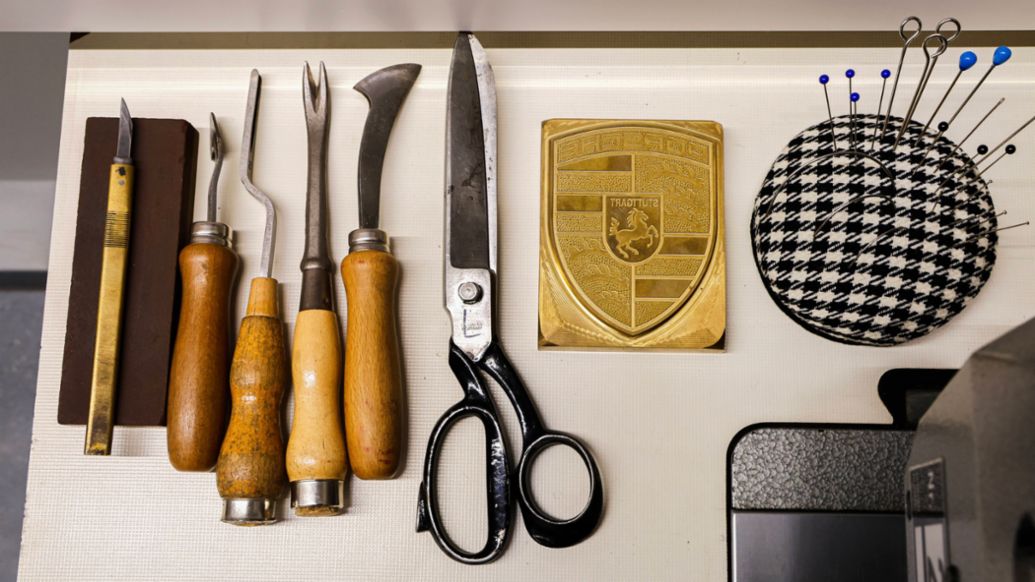
Factory restoration and Sonderwunsch programme at Porsche Classic
Manufactured by Porsche, restored by Porsche: Up to ten factory-restored sports car classics are awarded the one-of-a-kind Porsche Classic quality seal each year. More than a dozen specialists maintain, repair and restore road-approved sports cars on behalf of customers at Porsche Classic Factory Restoration. The factory includes experts from all trades involved in the manufacturing: body construction including a paint shop, engine and gearbox assembly and upholstery.
In addition, highly customised components can be crafted as part of the Porsche Sonderwunsch programme for individual customer ideas. The previous range of Porsche Classic Factory Restoration services has been significantly expanded to include Factory Re-Commissioning and Factory One-Off options. The customer vehicles are completely dismantled into their individual parts, each component is thoroughly inspected and, if necessary, reconditioned, modified or replaced. The vehicle is then reconstructed according to the customer’s individual wishes.
